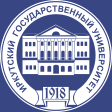List of issues > Series «Mathematics». 2016. Vol. 18
Binary Matrixes Based on Pascal’s Triangle’s Arithmetics and Char Sequences
This work describes consisting of zeroes and ones mathematical model, binary matrix obtained by the arithmetical and combinatorial transformations of Pascal’s triangle. Some options of a method of building of binary matrices by the choice of certain generatrix are listed. The example of the binary matrix formed in conditions when dimension of a matrix exceeds template length is given. The known method of creation of a binary matrix by reduction of a triangle of Pascal on the simple or compound module is given. Its comparison with the method offered in this work is carried out and the difference in creation of bigger number of fractal structures is specified. Fractal, algebraic and combinatory properties, features and distinctions of two creation of binary matrixes by means of templates [1 0] [1] and [0 1] [1] are described. The self-similarity properties of the binary matrixes are being examined. The theorem of the sequence of not repeating lines of the described binary matrixes is formulated and proved. The bjects and their properties investigated in this work are used at the solution of tasks of the theory of information and used as models of natural processes which show property of self-organization.
MSC
05B20
1. Bondarenko B.A. Generalized Pascal triangles and pyramids: their fractals, graphs and applications. Santa Clara, The Fibonacci Association, 1993. 253 p.
2. Kuzmin O.V., Orkina K.P. Creation of the codes correcting errors by means of the Pascal type triangle. Bulletin of Buryat State University, 2006, no 13, pp. 32-39. (in Russian)
3. Kuzmin O.V. Generalized Pascal pyramids and their applications. Novosibirsk, Nauka, Siberian Publishing firm RAS, 2000. 294 p.(in Russian)
4. Novikov F.A. Discrete mathematics for Programmers: Textbook for Higher Schools. 2nd ed. SPB, Piter, 2004. 364 p.(in Russian)
5. Shur A.M. Combinatorics on words: Textbook. Ekaterinburg, Publ. House of the Ural University, 2003. 96 p. (in Russian)
6. Wolfram S. Geometry of binomial coefficients. American Mathematical Monthly, 1984, vol. 91, no 9, pp. 566-571.
